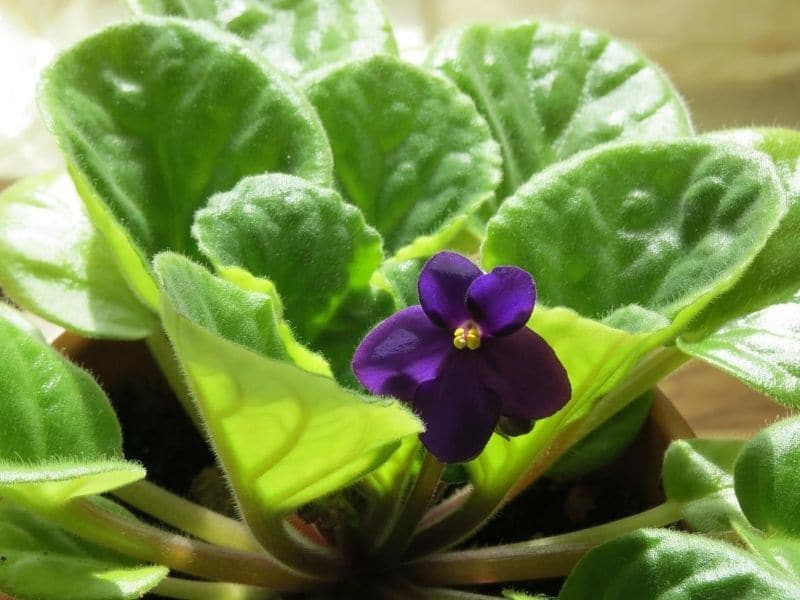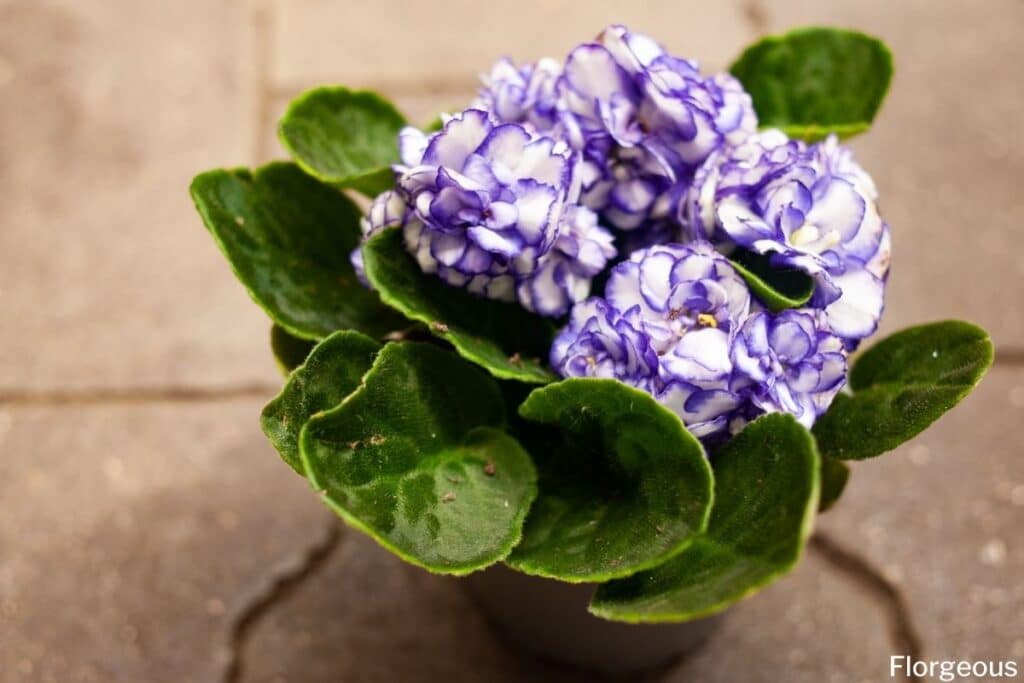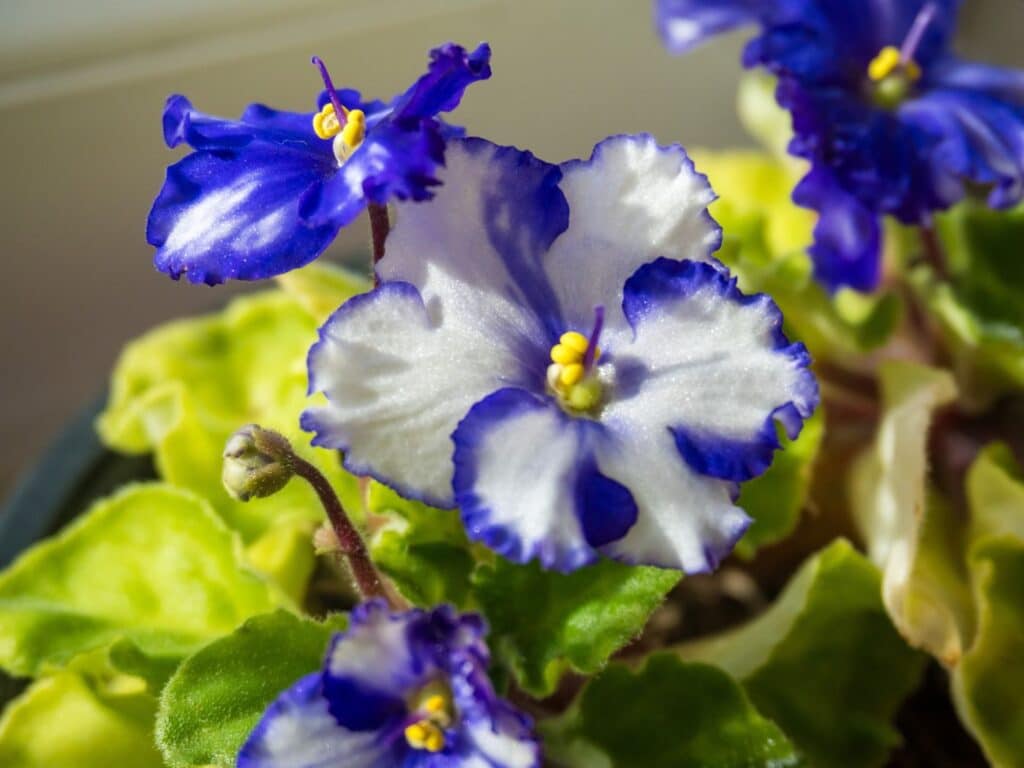Discovering your African violet’s once vibrant leaves turning yellow can be disheartening. These beloved houseplants, known for their beautiful blooms and lush foliage, require a delicate balance of light, water, and nutrients to thrive.
When something goes awry, their leaves are often the first to signal distress. But don’t worry, you’re not alone in this challenge. Understanding the root causes of this common issue is the first step toward restoring your plant’s health.
In this article, we’ll guide you through the essential steps to diagnose and address the factors contributing to yellowing leaves. From improper watering practices to pest infestations, we’ll cover the key areas you’ll need to examine.
With the right knowledge and care, you can revive your African violet and enjoy its stunning beauty once again. Let’s dive into the solutions that will help bring your plant back to life.
Understanding African Violet Leaves Turning Yellow
Signs and Symptoms of Discoloration
Identifying signs of distress in your African violets begins with spotting changes in leaf coloration. Yellow leaves often start at the base, progressing outward. You may well also notice the leaves becoming soft, or exhibiting brown spots along the edges. These visual cues are your first hint that something’s amiss, urging a closer examination of your plant’s environment and care routine.
Common Causes and Diagnosis
Pinpointing the cause behind yellowing leaves means playing plant detective. Over-watering stands as a prime suspect, leading to soggy soil and root rot, which African violets despise. Underwatering, however, can trigger a similar response, with the plant’s leaves losing their vibrant green hue due to a lack of moisture.
Improper light exposure is another culprit. Too much direct sunlight scorches leaves, turning them yellow, while insufficient light starves the plant, leading to a pale appearance. Nutrient deficiencies, particularly a lack of nitrogen, weaken the plant’s natural green color.
Last but not least, pests like aphids and mites suck the life out of leaves, causing damage that results in yellowing.
Digging into these potential issues, observe your watering habits, reassess the plant’s location for optimal light, and inspect for unwelcome guests. Adjustments in these areas often revive your African violets, bringing back their lush, colorful foliage.
Watering Practices and Yellow Leaves
The Role of Water Quality
Water quality plays a crucial part in the health of your African violet. Tap water often contains minerals and chemicals that may well not agree with your plant, leading to yellow leaves. Consider using filtered or distilled water for watering, as this can minimize the risk of build-up harmful to the plant. Remember, your African violet is a bit like a gourmet; it prefers its water clean and free of impurities.
Overwatering vs. Underwatering Effects
Finding the perfect balance in watering your African violet is key. Overwatering can suffocate the roots, preventing them from absorbing necessary nutrients, which, in turn, causes leaves to turn yellow and soggy. On the flip side, underwatering can dehydrate your plant, leading to dry, yellow leaves.
The trick is to water your plant when the top inch of soil feels dry to the touch, ensuring that the African Violet soil mix is moist but not waterlogged. Your African violet doesn’t enjoy swimming or droughts; it prefers a nice, steady sip.
Nutrient Deficiencies and Plant Health
Identifying Essential Nutrients for African Violets
To maintain the health of your African violets, acknowledging the critical role of nutrients is a must. These plants thrive on a balanced diet of nitrogen, phosphorus, and potassium, commonly referred to as the N-P-K ratio on fertilizer packages.
However, they also require micronutrients like calcium, magnesium, and sulfur for vibrant growth and to prevent yellowing leaves. If your African violet’s leaves start turning yellow, it’s a signal that something’s off with its nutrition intake.
Correcting Imbalances in Soil Fertility
Fixing soil fertility imbalances begins with testing the soil to learn what’s missing or in excess. For African violets, a well-draining, slightly acidic soil, with a pH between 6.0 and 6.5, promotes optimal nutrient uptake. If you discover a deficiency, using a balanced, water-soluble fertilizer designed for African violets can remedy the situation. Remember, moderation is key.
Over-fertilization can harm your plants as much as not fertilizing at all. Gradual changes and careful observation will help you adjust the soil’s fertility to meet your African violet’s needs, ensuring they stay healthy and vibrant.
Light Requirements for African Violets
Adequate Lighting vs. Light Stress

Light plays a crucial role in the health of African violets. These plants thrive under moderate, indirect sunlight. Too little light, and they may struggle to bloom, becoming leggy as they stretch towards any available light source. On the flip side, too much light can lead to light stress, manifesting as leaves turning yellow or developing a bleached, scorched appearance.
Finding that sweet spot, where your African violets receive enough light without being overwhelmed, is key. Ideally, placing them in a north- or east-facing window provides the perfect balance.
The Impact of Direct Sunlight
Direct sunlight, especially during the harsh midday hours, can spell trouble for African violets. These plants prefer a gentler touch, with bright to medium indirect light being their sweet spot. Direct, unfiltered sunlight can overheat the leaves, leading to yellowing or even white, sunburned spots. If your indoor space doesn’t offer the ideal natural light, consider using sheer curtains to diffuse direct sunlight or employing grow lights.
These alternatives can mimic the optimal lighting conditions, promoting healthy growth without the risk of sun damage. Adjusting the distance between grow lights and plants ensures they get just the right amount of light, safeguarding against the adverse effects of too much direct exposure.
Pest Infestation and Disease Management
Common Pests Affecting African Violets
African violets fall prey to a variety of pests that could turn their luscious leaves yellow. Aphids, mealybugs, and spider mites top the list. Aphids are tiny, but they pack a punch, sucking the sap and vitality out of leaves, leading to discoloration and weakening of the plant.
Mealybugs, with their cotton-like appearance, feast on plant juices, stressing your African violets further. Spider mites, although harder to spot, create fine webs and cause leaves to yellow and drop prematurely. Identifying these invaders early plays a critical role in maintaining the health of your African violets.
Preventing and Treating Diseases
Diseases can be stealthy villains in the life of African violets. Root rot and powdery mildew are among the primary culprits of plant distress. Root rot, often a result of over-watering, makes leaves turn yellow as the roots fail to transport necessary nutrients.
Conversely, powdery mildew leaves a telltale white, powdery coating on leaves, diminishing their vigor. Preventing these African Violet diseases starts with good cultural practices like ensuring proper drainage and not letting water sit on the leaves. If trouble strikes, fungicides may well come to the rescue, but the key is acting fast. Healthy practices keep your African violets blooming beautifully, steering clear of the dreaded yellow leaf syndrome.
Environmental Factors and Plant Care
Importance of Humidity and Temperature
African violets thrive in specific humidity and temperature ranges. They prefer humidity levels between 40% and 60%. If your home’s air leans towards the drier side, consider using a humidifier or placing a tray filled with pebbles and water beneath the plant pot.
Ensure the pot isn’t sitting in water, though, to avoid root rot. Temperature-wise, these plants enjoy a cozy range of 65-75°F (18-24°C). Extremes, either too hot or too cold, can trigger leaf yellowing. So, keep your violets away from drafty windows in winter and air conditioning vents in summer.
Repotting and Root Health Considerations
Repotting your African violet can make a big difference in preventing yellow leaves. These plants prefer to be slightly root-bound but still need repotting every 6-12 months for optimal health. Choose a pot that’s just a bit larger than the current one to avoid overwhelming your plant with too much space.
When repotting, use a light, airy soil mix specifically designed for African violets to ensure proper drainage and aeration of the roots. Inspect the roots carefully during this process.
Healthy roots appear white and firm, while unhealthy ones are brown and mushy. Remove any unhealthy roots to prevent the spread of decay and give your plant a fresh start in its new pot.
Tips for Reviving Yellowing African Violet Leaves
Adjusting Your Plant Care Routine

Adjusting your plant care routine can make a big difference if you’ve noticed your African violet leaves turning yellow. First, let’s talk water. It’s time to ditch the tap water if that’s been your go-to. African violets thrive on filtered or distilled water. Remember, too much of a good thing applies here; aim to keep the soil moist but not soggy.
Next up, lighting. Those leaves aren’t fans of the limelight. Place your plant in an area where it can enjoy moderate, indirect sunlight. Too much direct sunlight can be just as harmful as too little.
And for the finale, let’s talk feeding. Your African violet needs a balanced diet, rich in nitrogen, phosphorus, and potassium. Grab a water-soluble fertilizer and use it sparingly. Overfeeding can overwhelm your plant as much as neglect. Keep an eye on the soil pH too, aiming for slightly acidic to neutral ground.
When to Consult a Professional
If you’ve played doctor and your African violet still seems more yellow than green, it may well be time to call in the pros. Persistent yellow leaves despite your best efforts indicate a deeper issue. It could be an infection or a pest that’s not easily seen.
Don’t feel defeated if you need to seek expert advice. Gardening centers, plant nurseries, or a professional botanist can offer insights that the internet or a book may well not cover. They can also provide specific recommendations tailored to your plant’s unique situation.
Remember, reviving your African violet takes patience and attention to detail. Adjusting your routine and knowing when to seek help are key steps in bringing those vibrant green leaves back.
Frequently Asked Questions
Why are my African violet leaves turning yellow?
Yellowing leaves in African violets can result from several factors including over-watering, under-watering, too much or too little light, nutrient deficiencies, and pest infestations. Identifying the specific stressor is crucial for proper treatment and recovery.
How does water quality affect African violet health?
Water quality significantly impacts African violet health. Using filtered or distilled water is recommended to avoid the leaf yellowing caused by minerals found in tap water. This ensures your plants receive clean water that won’t contribute to nutrient imbalances.
What nutrients are essential for preventing yellow leaves in African violets?
A balanced diet rich in nitrogen, phosphorus, potassium, and essential micronutrients like calcium and magnesium is crucial for preventing yellow leaves in African violets. A balanced, water-soluble fertilizer applied in moderation can help maintain soil fertility and plant health.
How much light do African violets need?
African violets thrive in moderate, indirect sunlight. Too much direct sunlight can cause light stress, leading to yellowing leaves, while insufficient light can weaken the plant. Sheer curtains or grow lights can provide the right amount of light.
What are the optimal humidity and temperature conditions for African violets?
The optimal humidity level for African violets is between 40% and 60%, with a preferred temperature range of 65-75°F. Maintaining these conditions helps prevent stress and yellowing of leaves, contributing to a healthy plant.
How often should African violets be repotted?
African violets should be repotted every 6-12 months using a light, airy soil mix. This process is important for inspecting the roots for health and ensuring the plant remains vibrant and well-cared for, preventing issues like yellowing leaves.
What should I do if my African violet leaves continue to turn yellow?
If yellowing persists despite adjustments in care, seek professional help. Persistent yellowing may indicate a deeper issue, such as an infection or hidden pests, requiring expert analysis and treatment to revive your plant.
Up next:
- Dahlia Leaves Turning Yellow?
- Potato Leaves Turning Yellow?
- Peach Tree Leaves Turning Yellow?
- Plumeria Leaves Turning Yellow?
Image by [email protected]/depositphotos







